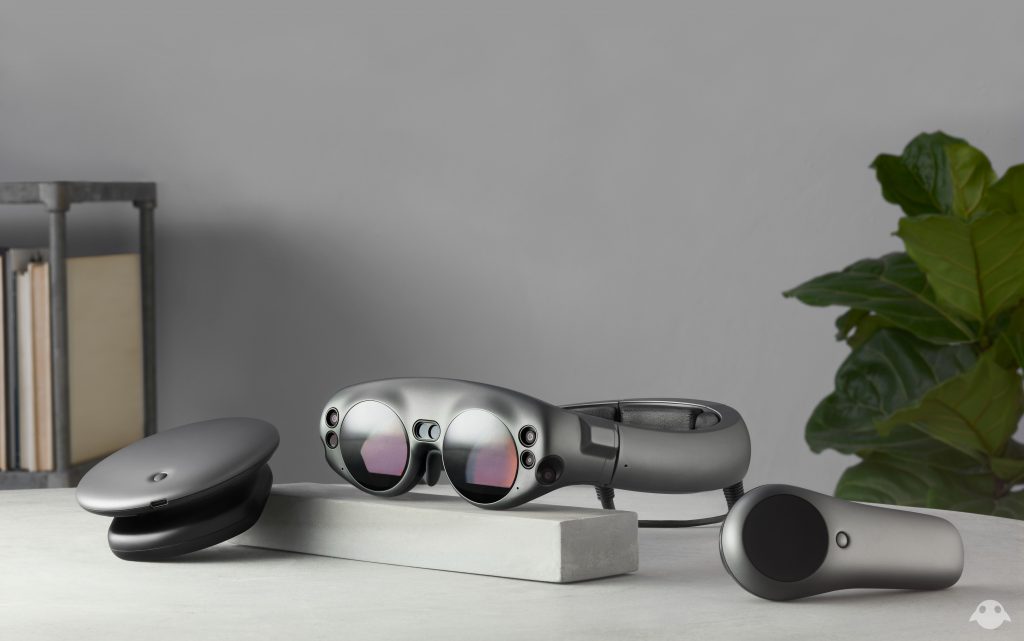In the augmented reality world, June did not come with major product releases, but it was an exciting month nonetheless. First of all, there are chances that augmented reality can be the thing that creates a bridge between the two major mobile operating systems, Android and iOS. Speaking of iOS, Apple has announced a few exciting upgrades to the operating system, some of which will bring new AR capabilities.
We may soon get our hands on a much awaited device, developed by a company that made headlines more for its secretive business operations than for its achievements. If you live in, or are planning on visiting Canada, there’s a brand new AR experience you wouldn’t want to miss out on. And finally, an interesting project wants to turn our phones into a multi-functional measuring tool, with the help of augmented reality.
Now that we have your attention, these are the most important augmented reality news in June 2018:
USDZ File Format for Augmented Reality Could Create a Connection between Android and iOS
A new open source file format for 3D content may be the bridging element between the top two mobile operating systems, Android and iOS. At this point, Apple has confirmed that it would adopt the USDZ file format for augmented reality content created for iPhones.
Since it’s an open format, Microsoft and Google could adopt it as well. This is more than just a theoretical possibility, given the history of Google’s support for open source projects and ideas. If it comes true, it will mean that users can share augmented reality experiences across devices freely, without worrying whether they are supported by the mobile OS.
USDZ is based on the USD, acronym for Universal Scene Description, a container file format used to store, share and process 3D files for mobile devices.
Apple’s iOS12 Included Upgraded ARKit 2

Apple’s annual WWDC conference in San Jose California focuses mostly on upcoming versions of its operating systems. For mobile phones, iOS12 will feature an upgraded augmented reality toolkit, ARKit 2.
ARKit 2 will support:
- multiplayer mode in AR games
- eye movement using the front-facing TrueDepth camera equipped on iPhone X
- ability of the OS to handle augmented reality content in browsers or anywhere else
- conversion of 3D files into AR-ready object using the USDZ file format
During the same event, Apple restated its commitment to continue working on the project for the first powerful AR and VR headset.
Magic Leap Submits Motion Controller for FCC Approval, Confirming Commitment to Start Shipping its Highly Anticipated AR Headsets

The Florida-based startup Magic Leap is already well-known for its secretive business operations, but this is about to change soon. The much-awaited Magic Leap One tetherless AR headset might be in users’ hands this year after all. The company has recently submitted its proprietary motion controller for FCC approval.
The filing states that the device contains “a transmitter that generates 3 orthogonal AC magnetic fields at frequencies ranging from 28.5 kHz to 42.42 kHz,” which means that the controller will offer users six degrees of freedom in movement.
Magic Leap has also filed a Request for Confidentiality with FCC, which prevents the regulatory body from publicly releasing internal photos, test setup photos, and the user manual for a period of 180 days from the initial date of the filing.
National Geographic Unveils The First Open-Air AR Planetarium
National Geographic partnered with Aryzon to create the first open-air augmented reality planetarium, OBSERVÉTOILES, in Quebec, Canada. The observatory is located at Au Diable Vert, which is adequate for sky viewing experiences, due to the darkness of its night sky.
With 180 seats, the mountain side amphitheater at Au Diable Vert Station Montagne will welcome each visitor with an Aryzon AR viewer and an Asus Zenfone 3 Zoom smartphone. The devices will allow viewers to discover the outlines of constellations and the names of various stars and planets in augmented reality. The visual presentation is accompanied by explanations given by science writer and TV personality Andrew Fazekas, also known as “Night Sky Guy.”
A Kickstarter Project may Bring Forth the First Professional AR Measuring Device
Arrim ONE is the name of an innovative device, currently gathering financial backing on crowdfunding website Kickstarter. Its purpose is to do away with all physical measuring devices and replace them with augmented reality measuring.
According to the description, Arrim ONE is made of aluminum and, once attached to the phone, uses a laser beam and the mobile phone camera to give accurate measurements. It has a small and comfortable size—2 x 1.2 x 0.6 inches—and weighs only 1.2 oz, which makes it easy to use even with smaller sized smartphones.

The team behind Arrim ONE states that the accuracy of the device is plus or minus 0.06 inch and that it can be used from a distance of up to 131 feet, although bright light might affect its accuracy.
The first units are set to be shipped in September at a price of $79.




